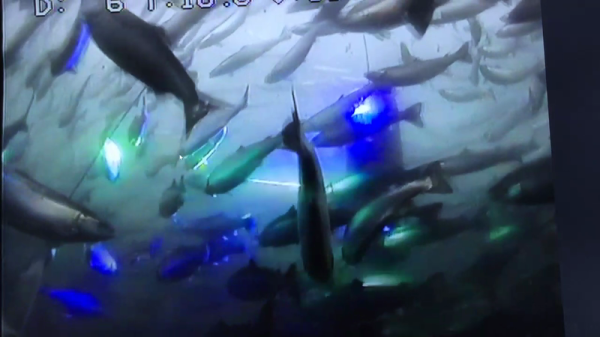De-lousing is a trying agricultural process. It becomes a major problem in pens which contain the hundreds of thousands of salmon farmed by Norwegians — the world’s largest salmon exporter — an environment which allows the parasite to flourish. To tackle the problem, the Stingray, developed by [Stingray Marine Solutions], is an autonomous drone capable of destroying the lice with a laser in the order of tens of thousands per day.
Introduced in Norway back in 2014 — and some areas in Scotland in 2016 — the Stingray floats in the salmon pen, alert and waiting. If the lice-recognition software (never thought you’d hear that term, huh?) detects a parasite for more than two frames in the video feed, it immediately annihilates it with a 530 nanometre-wide, 100 millisecond laser pulse from up to two metres away. Don’t worry — the salmon’s scales are reflective enough to leave it unharmed, while the pest is fried to a crisp. In action, it’s reminiscent of a point-defense laser on a spaceship.













